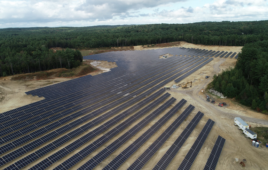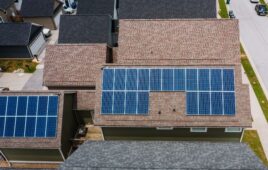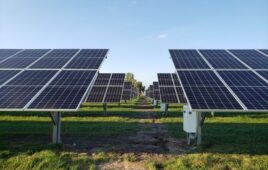
At Intersolar North America in July, the SunSpec Alliance Solar Finance and Asset Symposium IV featured an excellent set of speakers who covered the gamut of financing options for solar now and in the future. One of the most interesting discussions revolved around the role of local and regional banks.
By Frank Andorka, Editorial Director
At Intersolar North America in July, the SunSpec Alliance Solar Finance and Asset Symposium IV featured an excellent set of speakers who covered the gamut of financing options for solar now and in the future. One of the most interesting discussions revolved around the role of local and regional banks.
You might ask, “What is so intriguing about financing?” I’ll tell you: Getting regional and local banks involved will require installers to educate those bankers the same way they had to educate large investment banks over the past five years. The task may seem daunting, which is why I reached out to installers to see what they thought of the prospect and whether it would be worth the effort.
Azam Kazmi, president of Yellowlite in Independence, Ohio, says he believes there is clearly space for local and regional banks to enter solar financing.
“The more solar financing options, the merrier,” Kazmi says. “Financing is such a delicate component of any sale, but for solar it can make or break it.”
“Considering that finances for solar are different depending on your local and state incentives, regional banks play a critical role to push solar further, especially into non-traditional solar states,” he adds.
Financing also depends on the type of system you’re selling. Yellowlite primarily focuses on residential customers. Standard Solar, on the other hand, works in the commercial and residential markets. The two segments face different financing challenges, says Tony Clifford, CEO of Standard Solar in Rockville, Md.
“Since tax equity is required for most large commercial projects, we almost always look to major national and international banks, utilities, large corporations and other entities that can provide both tax equity and debt financing,” Clifford says. “But here may be an expanded role for regional and local banks once the 30% ITC steps down to 10%. With less reliance on tax-equity financing, regional and local banks may be better suited to provide long term leases and loans for solar PV systems.”
Nathan Homan, co-founder and principal at Wiser Capital, also recognizes the impacts of the pending tax credit expiration and says the biggest potential growth for distributed generation (DG) is involvement by larger community banks and regional banks. These have great opportunities to participate with asset-based credit facilities secured by the cash flow from pools of DG commercial power-purchase agreements (PPAs).
“When the banks get confidence in serving this asset class and their regulators get comfortable with the associated risks, the banking industry can be a formidable player in the smaller commercial project finance market,” Homan says.
The more confidence local and regional banks gain, the more contractors will be able to turn to those banks in the future to secure financing.
“I expect that solar loans will become increasingly common with local banks, credit unions, finance companies and other entities that now offer car loans to their customers,” Clifford says. “As more consumer financial institutions offer solar loan programs, residential-customer demand will shift away from lease and PPA products and more towards solar loans.”
Kazmi says finding financing was one of Yellowlite’s biggest challenges because the company is located in Ohio, a non-solar-leasing state. But after a lot of patience and trial and error, he believes the company has some pretty enticing solutions for customers, especially unsecured options.
“Our challenge right now is how we can improve the turnaround time for the customer who wants secured financing,” Kazmi says. “Having a reasonable turnaround is key to keeping the sale ‘hot,’ as is being able to accommodate various financing models.”
It’s clear that when local and regional banks join the solar lending market, they will expand the industry even further than the large financial players are doing now. The real question is: How long will we have to wait and what will be the long-term effects?






Tell Us What You Think!